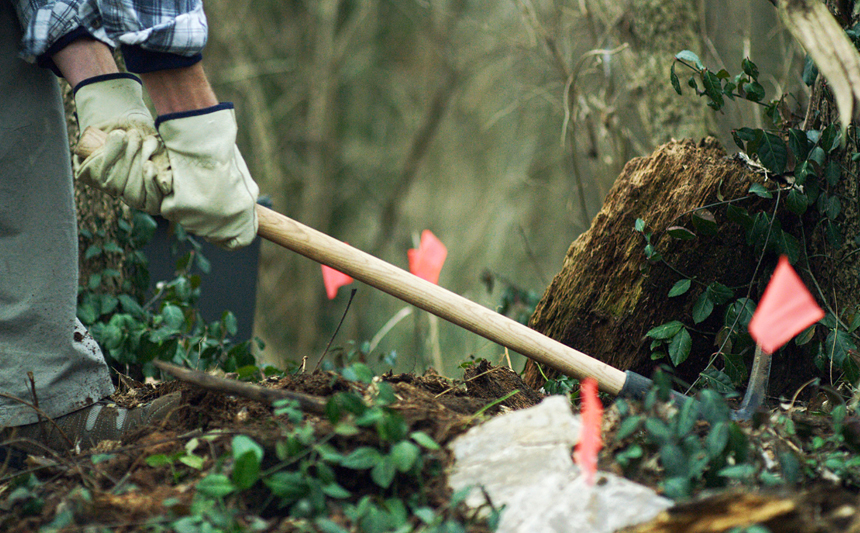Bacteria from Kentucky coal mine fire could make antibiotic drug more effective

Researchers looking in Appalachia for exotic microorganisms that could produce groundbreaking new medicines have reported a unique find from the smoldering remains of a coal mine fire that’s burned for nearly a decade in southeastern Kentucky.
In new findings published this week in the journal Nature Chemical Biology, a research team from UK, Rice University and the University of Oklahoma made new — and in some cases, more effective — versions of the antibiotic drug daptomycin by using an enzyme from soil bacteria found in smoke vents of the Ruth Mullins coal fire. The study’s authors said the enzyme, called PriB, could prove useful in drug development.
Study co-author Jon Thorson, PhD, director of the UK Center for Pharmaceutical Research and Innovation (CPRI), says the finding is part of the center’s efforts in “bioprospecting,” or the search for new organisms that could be useful for making drugs. Thorson and colleagues have isolated more than 750 microbial strains, including some that live miles below ground in coal mines. In addition, the team has isolated more than 250 corresponding microbial metabolites, more than half of which have never been previously documented.
“A major focus of the CPRI is the discovery of novel microbial natural products and corresponding biocatalysts that have synthetic applications,” Thorson said. “PriB is one of the first capable of modifying highly complex drugs like daptomycin.”
The organism that yielded PriB is Streptomyces species “RM-5-8.” The RM stands for Ruth Mullins, the name of the coal fire where RM-5-8 was found.
“We don’t know the mechanism for why it makes daptomycin work better,” said Rice structural biologist George Phillips, whose team determined the three-dimensional structure of the enzyme. “It may be that it just gets into membranes better because the enzyme’s specialty is adding a prenyl group, an organic molecule that typically comes into play when a molecule docks with the outer membrane of a cell. The target for the drug is associated with the membrane, so this might be the mechanism for the improvement.”
Phillips has collaborated closely with both Thorson and co-author Shanteri Singh, an assistant professor at the University of Oklahoma, for more than a decade. Phillips’ team specializes in using X-ray crystallography to determine the precise structure of enzymes like PriB.
“In the organism, the enzyme both makes prenyl groups and attaches them to the standard amino acid tryptophan,” Phillips said. “This is part of a much larger metabolic pathway, but the (UK) team isolated the gene that produces the enzyme, and they used that to create a form of E. coli that produced the enzyme in bulk.”
Phillips’ team crystallized the enzyme and determined its shape. Phillips said the enzyme has a pocket where it binds with tryptophan and attaches the prenyl group. Studies at UK found the enzyme readily prenylates more than a dozen other compounds and can also use “nonnative” prenyl donors that notably expand its synthetic utility. Phillips said his group is already looking for ways to modify PriB’s pocket to make it even more useful in biosynthesis.
“This prenylation reaction could be broadly useful in producing drugs and other chemicals through biotechnology,” Phillips said. “Because the enzyme is permissive, it is possible to think of using it to produce all sorts of drugs, including antibiotics and anti-cancer therapies.”
In the video below, Thorson explains how bioprospecting for microorganisms in Appalachia works.




